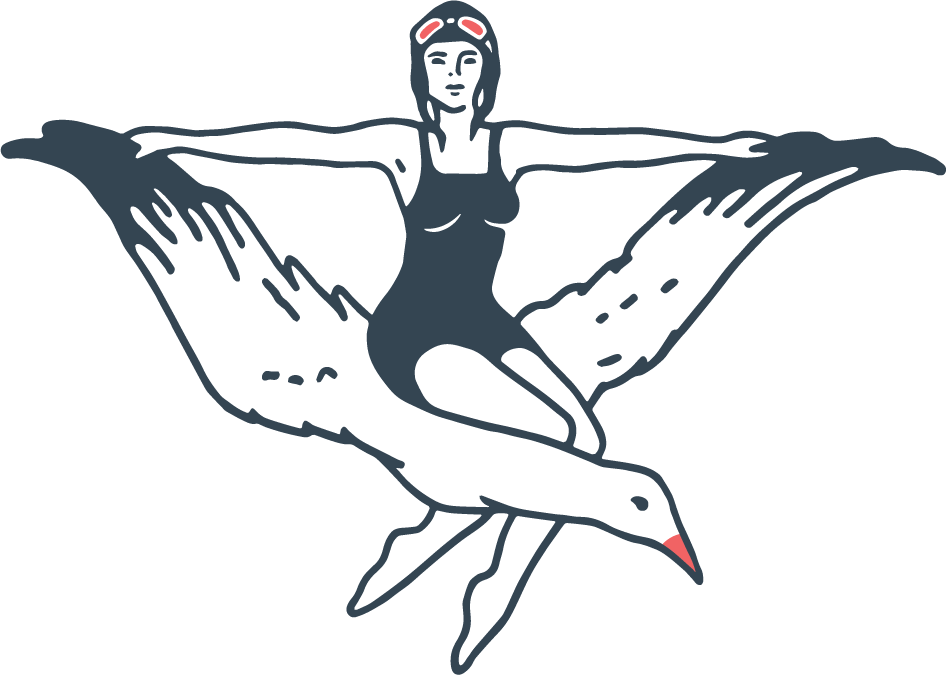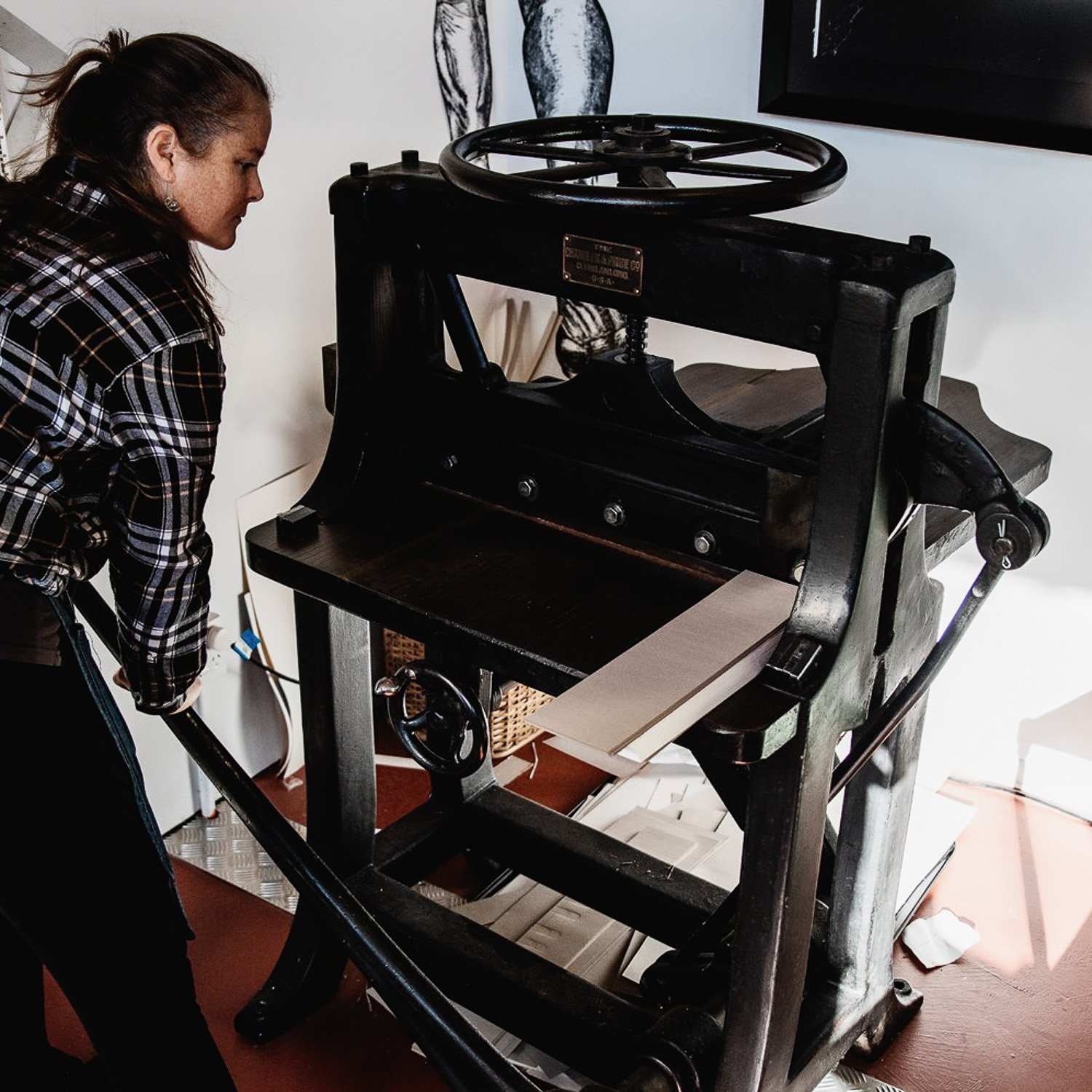Modern Letterpress Explained
We make beautiful things ….and this is how! Take a deep dive into the production process at The Armarie Room, with printmaker and owner Renee Hadlow. From plate to finished artwork, this is modern letterpress explained.
LETTERPRESS NOW.
Letterpress printing is a centuries-old artisan method, requiring skill and precision. Traditionally, letterpress was limited to wooden or metal type, but modern letterpress has evolved with the use of digitally-made printing plates. These new capabilities have provided greater creative freedom, modern aesthetics and impressive quality.
A digitally-made, letterpress printing plate at The Armarie Room.
Modern printing plates have meant that rich, tactile impressions are now part of the letterpress aesthetic.
MIXING THE OLD WITH THE NEW.
Modern letterpress printing uses laser-cut polymer plates, as the printing surface for ink to be applied. The plates are almost like a stamp - each design is etched into the plate allowing ink to be rolled over the design. The Armarie Room works with a NZ based company who produce high quality plates - the artwork is rendered with incredible precision and consistent accuracy. Artwork is sent as a digital file and the plate is made true to the details in the file. A separate plate is made for each colour in the artwork, including any blind debossing or embossing required. This process makes it possible to work with hand drawn, digital or photographic artwork. It is the combination of plate, pressure and quality paper that produces the distinct, surface impression letterpress is renowned for.
Once the printing plate has been produced, it is adhered to a base that is locked into place on the letterpress machine. The plate is lined up perfectly, using the grid on the base and the registration guides on the machine. Everything is meticulously measured to make sure the design will print perfectly straight.
Letterpress printing plates are adhered to a metal base before being locked into place on the letterpress machine.
Modern letterpress printing plate are made using laser-cut polymer. The artwork is sent as a digital file and the plate is made true to the details in the file.
RICH COMBINATIONS OF INK.
A big part of the creative process is mixing ink to just the right colour, tone and opacity. The Pantone colour system is used to find the swatch colour that is the perfect match. Each swatch gives an ink formula (colours + percentages) which becomes the mixing guide. I like to mix on glass using a palette knife set up next to a window so I get the natural light. It's part science, part intuition, part creative play and super satisfying! Our inks have vibrant strength, and it is beautiful watching them slowly mix with one another as the colour emerges.
The Pantone colour chart is used to find the swatch colour that is the perfect match.
Each colour swatch provides the ink colours and percentages needed to mix the correct shade and tone.
Once the ink has been mixed to the correct tone, it is placed on the the inking surface of the press. The nature of letterpress allows printing of one colour at a time, requiring a separate plate and a separate pass through the press for every colour to be printed. This means for each colour in a piece of art, I ink up the press in that colour, lay out the artwork and run the paper through. For the next colour, I have to clean off the rollers, set up the next plate to line up exactly to the last one, and run each sheet of paper through again.
Sound labour intensive? It is! But it is also immensly satisfying slowly building the layers of a beautifully printed work.
Mixing ink on glass using a palette knife. Letterpress ink is sticky and tacky so it needs to be worked thoroughly to ensure it is completely mixed.
Dabbing ink onto the inking rollers of the printing press. When the machine is turned on, the rollers whizz into action, gently oscillating from side to side to spread the ink evenly along the roller surface.
Sometimes I create what is called a ‘split fountain’ or ‘ombré’. This is where I put multiple colours on the rollers at once to create a cool gradient effect.
Multiple colours are spaced along the inking rollers. When the machine is turned on the colours blend together to create hues that melt from one shade to the next. This is called ‘ombré’ or ‘split fountain’ inking.
The red gradient in the artwork has been created using ‘split fountain’ or ‘ombre’ inking. The image on the left shows the red hues on the printing rollers and the printing plate used to create this work.
PREMIUM PAPERS.
Paper is an integral part of the final look and feel of a project. Each paper has its own subtle characteristics making certain papers better suited to various projects. The Armarie Room has a range of fine art and eco friendly paper that I work with on a daily basis and know intimately. My paper of choice for fine press printing is cotton paper. The long, soft fibres create stunning impressions and the subtle grain has a luxurious look and feel.
Each project is different so sheets of paper are trimmed to size specially for the project’s requirements. The paper is hand fed through the press, one sheet at a time. Careful attention is paid to various factors throughout the printing process such as alignment, impression, ink coverage, and colour consistency.
Cotton paper is our paper of choice at The Armarie Room. The soft fibres create stunning impressions when letterpress printed.
We do a lot of measuring during the production process! We start with full sheets of paper, which are cut to size to suit the requirements of each project.
HAND PRESSED WITH CARE AND PRECISION.
I am fortunate to work with a range of printing presses. The vintage machines at The Armarie Room are finely tuned and operated with care and precision. I am so grateful to the wonderful team of ex-commercial printers who have worked alongside me with passion and dedication to lovingly restore each one.
We are one of few printeries in NZ to have a precision cyclinder press which performs fine quality printing.
Air suction lever for paper feeding on the Heidelberg platen press at The Armarie Room.
Table lift lever for paper feeding on the Heidelberg platen press at The Armarie Room.
The inking rollers on the Heidelberg platen gently oscillate from side to side to distribute ink evenly.
MAKING THE CUT.
Once the work has been printed and the ink is dry, the paper is trimmed to the final size. Admittedly, this can be the part of the project where I feel the most nervous, as one wrong cut on a beautifully crafted work could mean starting again! This is where the much quoted “measure twice, cut once” has intrinsic worth and becomes the mantra for this stage of production.
Cutting paper to correct production size on our beautiful, cast iron guillotine at The Armarie Room.
Letterpress business cards ready to be trimmed to the final size.


















